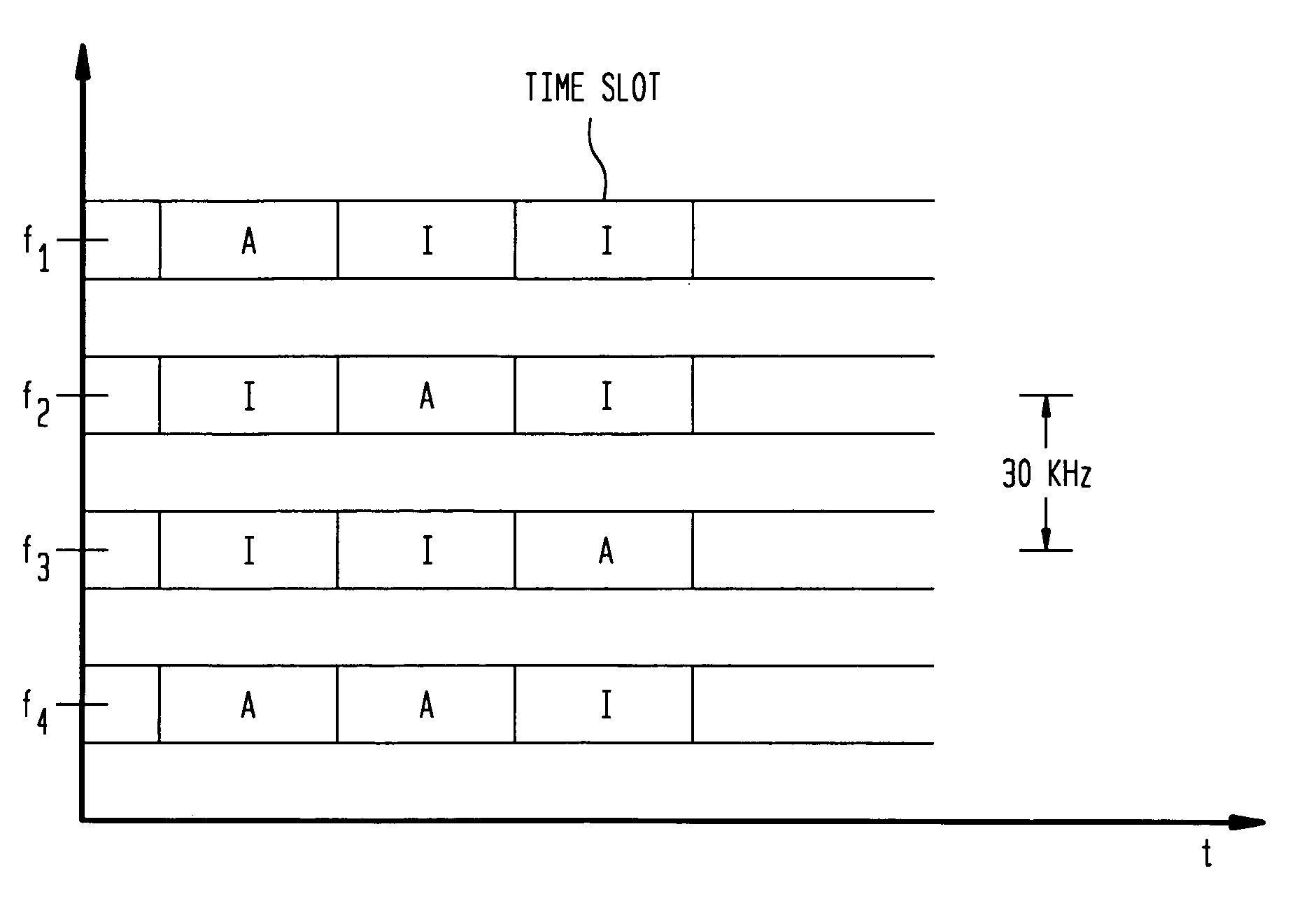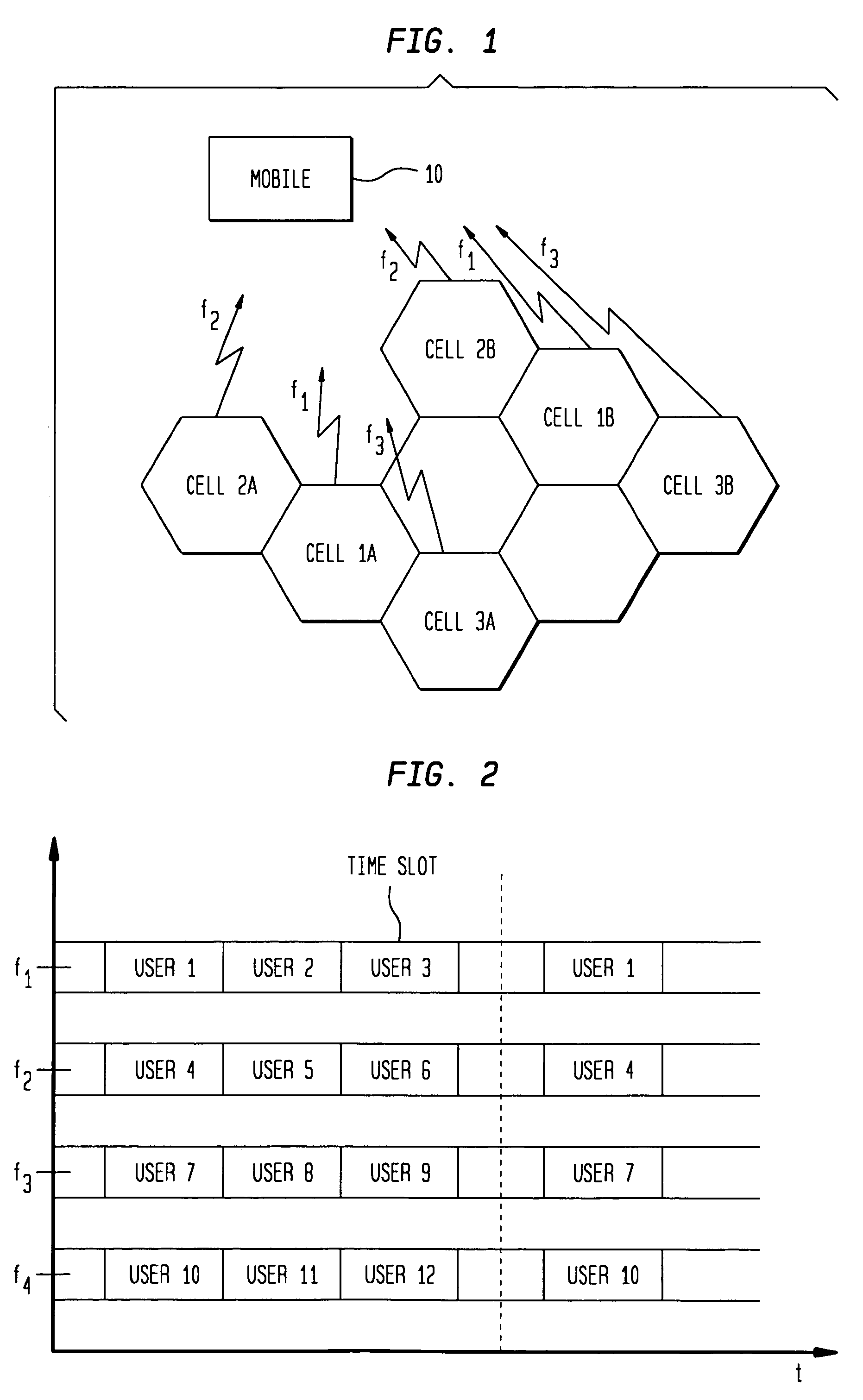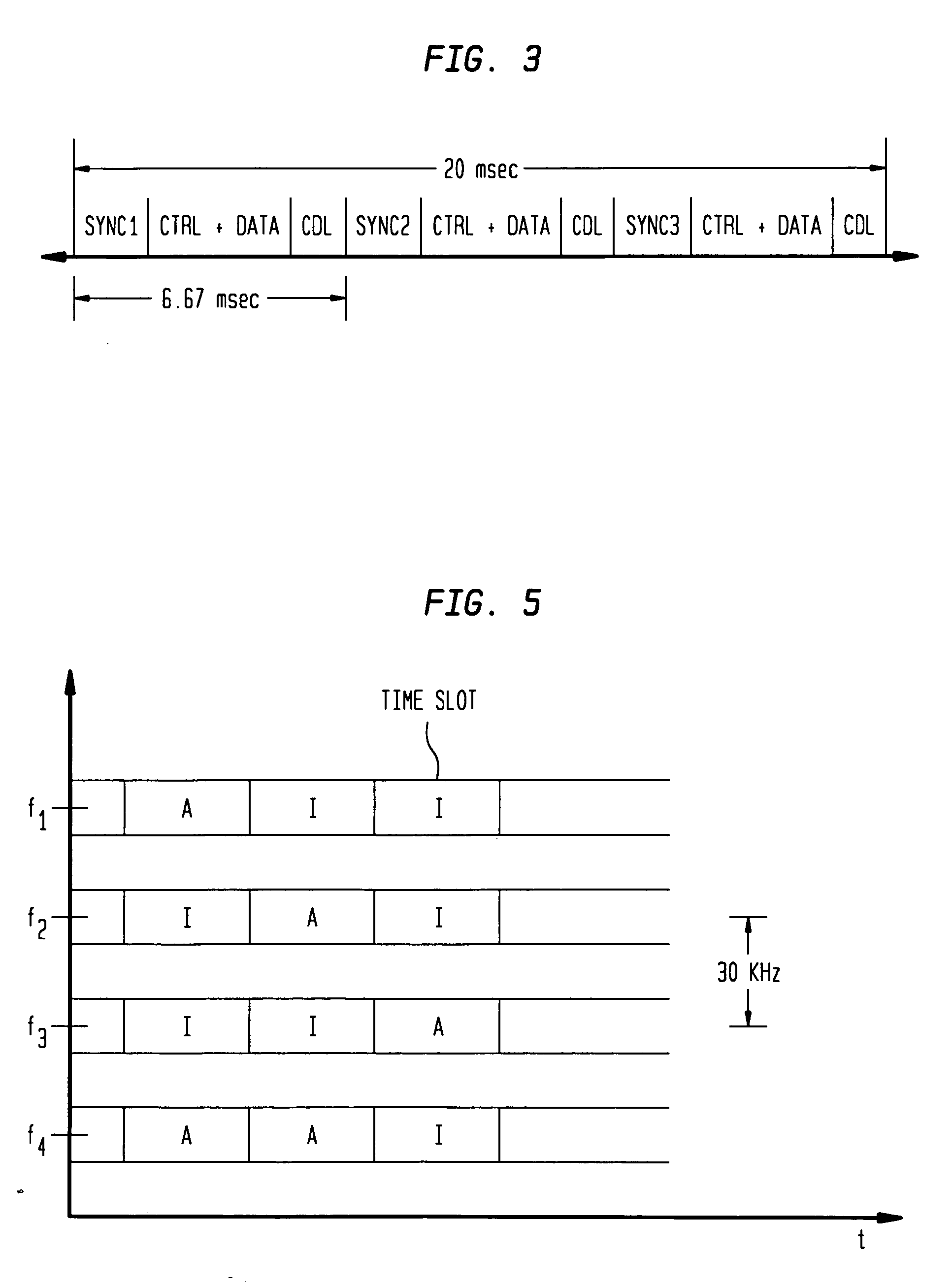TDMA communication system and method including discontinuous modulation for reducing adjacent and co-channel interference
a communication system and discontinuous modulation technology, applied in the field of tdma communication system, can solve the problems of increasing adjacent channel interference, reducing voice quality, and reducing voice quality, so as to reduce adjacent and co-channel interferen
- Summary
- Abstract
- Description
- Claims
- Application Information
AI Technical Summary
Benefits of technology
Problems solved by technology
Method used
Image
Examples
Embodiment Construction
[0017]FIG. 4 illustrates a TDMA communication system of a preferred embodiment of the invention. Executive control processor (ECP) 40 is wired to base stations 10, 20 and 30 located within respective cells 1–3. Although three respective cells 1–3 are illustrated, the TDMA communication system may include any number of cells. ECP 40 routes or switches voice or data from public switched telephone network (PSTN) 60 to mobile 50 via any of base stations 10, 20 and 30 and also routes voice or data from mobile 50 to PSTN 60, or to any other mobile within the network, via base stations 10, 20 and 30. ECP 40 designates the carrier frequency and time slots that the voice or data are transmitted in a downlink transmission from a base station to mobile 50, as will be described subsequently. ECP 40 includes microprocessor 401 which functions to control operation of the TDMA communication system in accordance with software programming stored within memory 403.
[0018]Base station 10 as illustrated...
PUM
 Login to View More
Login to View More Abstract
Description
Claims
Application Information
 Login to View More
Login to View More - R&D
- Intellectual Property
- Life Sciences
- Materials
- Tech Scout
- Unparalleled Data Quality
- Higher Quality Content
- 60% Fewer Hallucinations
Browse by: Latest US Patents, China's latest patents, Technical Efficacy Thesaurus, Application Domain, Technology Topic, Popular Technical Reports.
© 2025 PatSnap. All rights reserved.Legal|Privacy policy|Modern Slavery Act Transparency Statement|Sitemap|About US| Contact US: help@patsnap.com



